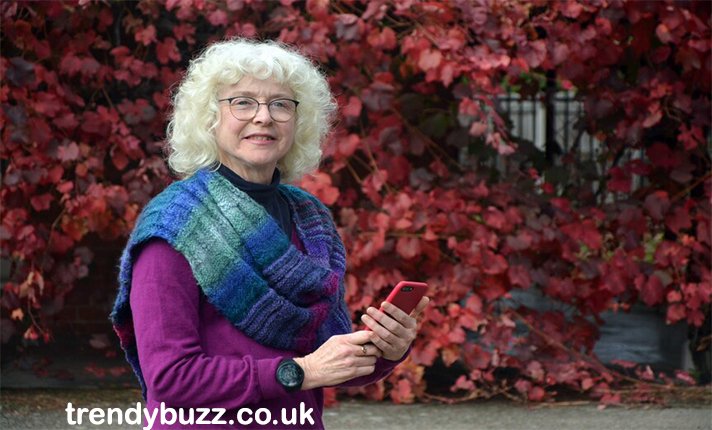Introduction
Jo McCubbin is a name that may not be familiar to everyone, but her influence has quietly shaped the life and career of one of the UK’s rising wildlife presenters. Known primarily as the mother of zoologist and television presenter Megan McCubbin, Jo’s story is one of steady professional dedication, thoughtful parenting, and a lasting enthusiasm for natural world. This article explores what is publicly known about Jo McCubbin, the role she played in nurturing Megan’s passion, and why private figures like her matter in public conversations about conservation and family.
Early life and professional background
Details about Jo McCubbin’s early life are scarce in public domain, a reflection of her preference for privacy. What is known is that she trained in the healthcare profession and worked as a nurse — a career requiring compassion, meticulous attention, and resilience. This background in clinical care suggests a temperament built on patience and observation, qualities that ripple outward into family life and parenting. Although Jo did not seek a public profile, her professional life grounded her family in a culture of care and responsibility, imparting values that would later surface in Megan’s approach to animals and conservation.
Family, connections, and influence
Jo McCubbin’s daughter, Megan, has become a visible figure in wildlife broadcasting, co-presenting popular BBC series and using social platforms to champion conservation. Megan’s public biography notes that her mother is Jo McCubbin and that, when Megan was very young, Jo entered a long-term relationship with naturalist Chris Packham. Packham’s influence on Megan is often discussed in interviews and profiles, and while Jo’s role was more private, accounts emphasize that Jo supported her daughter’s curiosity and nurtured a household where exploration of natural world was possible. That familial support — quiet encouragement from a parent who values care and learning — often proves decisive in shaping how a child views the world.
Privacy and public life
Jo McCubbin has largely remained out of the limelight. This choice to protect personal privacy has permitted Megan and others in the family to build public profiles while retaining a private home life for close relationships. Profiles of Megan and features about her family typically mention Jo with respect and discretion, focusing on supportive role she played rather than seeking sensational detail. For many parents of public figures, this balance between private life and public interest is essential; it allows children who enter public eye to do so with the quiet strength of a stable home base.
Values and legacy
Although Jo herself is not a media personality, the values she embodied — commitment to care, an interest in learning, and encouragement of curiosity — are clear in Megan’s public work. Megan’s outreach around wildlife conservation, empathy toward animals, and determination to communicate complex environmental issues in accessible ways reflect a household that prized observation, compassion, and responsibility. Parents who model these behaviors often provide potent, long-term influence, and Jo’s example demonstrates that impact need not accompany fame.
Reflections on quiet influence
Jo McCubbin’s story is an example of how private lives intersect with public ones. In a media landscape that often prizes visibility, the quieter stories of parents and mentors can be overlooked. Yet those narratives are crucial: they remind us that many public successes are rooted in everyday practices — the encouragement of a curious child, the modeling of empathy, and the steady reliability of a caregiver. Jo’s preference for privacy should not be taken as absence; rather, it can be seen as a deliberate choice to emphasize family over attention, to let the next generation speak loudly for the values they were taught.
Additional context and public perception
Public interest in the families of conservation figures often centers on how personal histories shape public commitments. In Jo McCubbin’s case, public narrative emphasizes mentorship more than celebrity. Observers note that a household shaped by healthcare work and an appreciation for natural history creates fertile ground for a child to develop empathy and curiosity. When public figures attribute their values to family life, it encourages audiences to appreciate the often-invisible work of parents and carers. Families frequently translate intimate values into public action: a mother’s insistence on kindness becomes a presenter’s compassionate framing of animal stories; a caregiver’s patience becomes an educational style that invites viewers to learn rather than simply watch.
Why this matters now
At a moment when environmental issues demand public attention and engagement, stories of origin and influence can humanize advocacy. Audiences who see conservation communicated through personal stories are more likely to connect emotionally and take action. Quiet support of family members like Jo McCubbin contributes to that storytelling foundation. It helps explain why some advocates communicate with particular warmth or persistence: they carry lessons learned in domestic spaces into larger conversations. Recognizing these private influences does not diminish public achievement; instead it situates success within a broader, more realistic web of relationships and support.
A final thought
Respecting the privacy of individuals who are not public figures need not prevent us from acknowledging their role. Jo McCubbin’s life — marked by professional care and parenting — represents an important strand in the tapestry of conservation narratives: the power of ordinary care to produce extraordinary commitment. By valuing those quieter contributions, we broaden our understanding of how the public champions we admire came to be and invite a more compassionate view of the work that shapes them.
